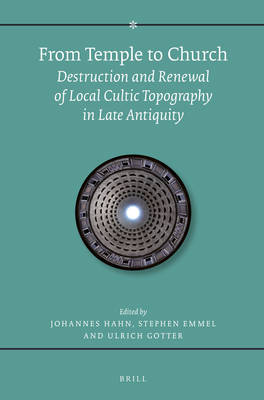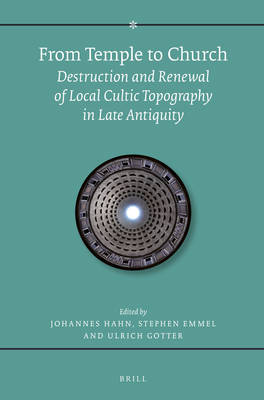
- Afhalen na 1 uur in een winkel met voorraad
- Gratis thuislevering in België vanaf € 30
- Ruim aanbod met 7 miljoen producten
- Afhalen na 1 uur in een winkel met voorraad
- Gratis thuislevering in België vanaf € 30
- Ruim aanbod met 7 miljoen producten
Zoeken
From Temple to Church
Destruction and Renewal of Local Cultic Topography in Late Antiquity
Stephen Emmel
€ 305,45
+ 610 punten
Uitvoering
Omschrijving
Destruction of temples and their transformation into churches are central symbols of late antique change in religious environment, socio-political system, and public perception. Contemporaries were aware of these events' far-reaching symbolic significance and of their immediate impact as demonstrations of political power and religious conviction. Joined in any "temple-destruction" are the meaning of the monument, actions taken, and subsequent literary discourse. Paradigms of perception, specific interests, and forms of expression of quite various protagonists clashed. Archaeologists, historians, and historians of religion illuminate "temple-destruction" from different perspectives, analysing local configurations within larger contexts, both regional and imperial, in order to find an appropriate larger perspective on this phenomenon within the late antique movement "from temple to church".
Specificaties
Betrokkenen
- Auteur(s):
- Uitgeverij:
Inhoud
- Aantal bladzijden:
- 392
- Taal:
- Engels
- Reeks:
- Reeksnummer:
- nr. 163
Eigenschappen
- Productcode (EAN):
- 9789004131415
- Verschijningsdatum:
- 30/06/2008
- Uitvoering:
- Hardcover
- Formaat:
- Genaaid
- Afmetingen:
- 163 mm x 241 mm
- Gewicht:
- 748 g

Alleen bij Standaard Boekhandel
+ 610 punten op je klantenkaart van Standaard Boekhandel
Beoordelingen
We publiceren alleen reviews die voldoen aan de voorwaarden voor reviews. Bekijk onze voorwaarden voor reviews.








